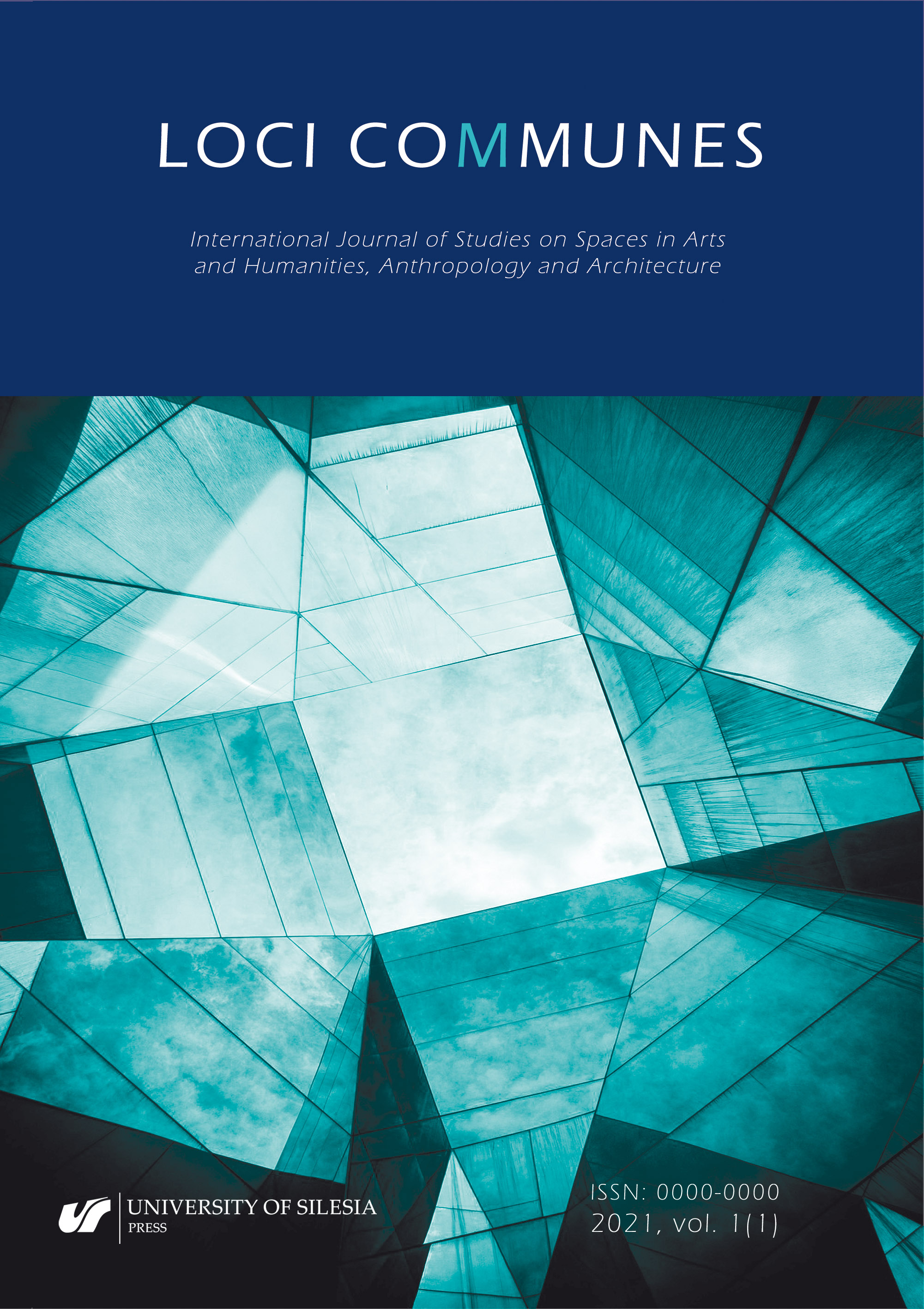Alberto Giacometti Stiftung. (n.d.). Cube, 1933/1934 Kubus. Retrieved January 8, 2021, from https://www.giacometti-stiftung.ch/sammlung/objekt/?tx_artcollection_single%5Bartpiece%5D=725&cHash=3570454abcaa81e8c35a881b94c88023
Google Scholar
Boeri Studio. (2014). Vertical forest. https://www.stefanoboeriarchitetti.net/en/project/vertical-forest/
Google Scholar
Brown, D. S. (2010) Having words. Architectural Association Publications.
Google Scholar
Gans, D. (1987). The Le Corbusier guide. New York: Princeton Architectural Press.
Google Scholar
Guggenheim. (2018a, June 27). Cube (1934 [cast 1959]) by Alberto Giacometti. https://www.guggenheim.org/audio/track/cube-1934-cast-1959-by-alberto-giacometti
Google Scholar
Guggenheim. (2018b, June 27). Surrealist composition (ca. 1933) by Alberto Giacometti. https://www.guggenheim.org/audio/track/surrealist-composition-ca-1933-by-alberto-giacometti
Google Scholar
Hansen, O. (2005). Towards open form. Warszawa: Fundacja Galerii Foksal.
Google Scholar
Hansen, O. (2014, French original 1961). Open Form in Architecture – The Art of the Great Number (pp. 43–45). In A. J. Wieder & F. Zeyfang (Eds.), Open form: Space, interaction, and the tradition of Oskar Hansen. Künstlerhaus Stuttgart.
Google Scholar
Hauser & Wirth (n.d.). Allan Kaprow. Retrieved January 8, 2021, from https://www.hauserwirth.com/hauser-wirth-exhibitions/2917-allan-kaprow
Google Scholar
Hinte, Ed van, Neelen, M., Vink, J., & Vollaard, P. (2003). Smart architecture. Rotterdam: 010 Publishers.
Google Scholar
Ingersoll, R. (2011). Neues Kloster und Besucherzentrum: Der Disput um Ronchamp. Bauwelt, 43, 10–13.
Google Scholar
Kaprow, A. (1958). Notes on the creation of a Total Art. Original published in Environment by Hansa Gallery. Reprinted in: Kaprow, A., & Kelley, J. (Eds.), Essays on the Blurring of art and life. University of California Press, 1993, pp. 10–12.
Google Scholar
Kaprow, A. (1962). About Words. Original published in Words by Smolin Gallery. Cited in: Reiss, J. H., From Margin to Center: The Spaces of Installation Art. The MIT Press, 2000.
Google Scholar
Kaprow, A. (1965). Assemblage, environments and happenings. Original published by Harry N. Abrams Inc. In: Reiss, J. H., From Margin to Center: The Spaces of Installation Art. The MIT Press, 2000.
Google Scholar
Kaprow, A. (1968). The Shape of the Art Environment. Re-printed in: Kaprow, A., & Kelley, J. (Eds.), Essays on the blurring of art and life. University of California Press, 1993, pp. 90–94.
Google Scholar
Kaprow, A., & Schechner, R. (1968). Extensions in time and space. An interview with Allan Kaprow by Richard Schechner. The Drama Review: TDR, 12(3)., Architecture/Environment, Spring, 153–159.
Google Scholar
Kinsella, E. (2017, June 12). A blueprint for blue chip: How Giacometti became the world’s most expensive sculptor. Artnet. https://news.artnet.com/market/giacometti-art-market-980489
Google Scholar
Kolarevic, B., & Parlac, V. (2015). Building dynamics: Exploring architecture of change. Routledge. https://doi.org/10.4324/9781315763279
Google Scholar
Le Corbusier, & Zaknic, I. (Ed.) (1997). The final testament of Perè Corbu: A translation and interpretation of Mise au Point by Ivan Zaknic. Yale University Press.
Google Scholar
Lukács, G. (2015). Die Verdinglichung und das Bewußtsein des Proletariats. Bielefeld: Aisthesis Verlag.
Google Scholar
Maierhofer, M., Ulber, M., Mahall, M., Serbest, A., & Menges, A. (2020). Designing (for) change: Towards adaptivity-specific architectural design for situational open Environments. In: Proc. of the Int. Conf. on Education and Research in Computer Aided Architectural Design in Europe. eCAADe 38, pp. 575–584.
Google Scholar
Manuel Herz Architects (2017). Ballet mecanique. http://www.manuelherz.com/ballet-mecanique
Google Scholar
Morton, T. (2010). Guest column: Queer ecology. PMLA, 125(2), 273–282. http://www.jstor.org/stable/25704424
Google Scholar
Ned Kahn Studios (2000). Wind Veil. http://nedkahn.com/portfolio/wind-veil
Google Scholar
Next Office (2014). Sharifi-ha house. http://nextoffice.ir/#!/project/sharifi-ha-house/
Google Scholar
Sartre, J.-P. (1999). Die Suche nach dem Absoluten: Texte zur bildenden Kunst. Reinbek: Rewohlt Verlag.
Google Scholar
Schmidt III, R., & Austin, S. (2016). Adaptable architecture: Theory and practice. Routledge.
Google Scholar
Schnädelbach, H. (2010) Adaptive Architecture – A Conceptual Framework (523–555) In: Proc. of the MediaCity. Bauhaus-Universität Weimar.
Google Scholar
Scott, F. D. (2014). Future adaptability (34–42). In A. J. Wieder & F. Zeyfang (Eds.), Open form: Space, interaction, and the tradition of Oskar Hansen. Künstlerhaus Stuttgart, pp. 34–42.
Google Scholar
SFB. (n.d.). Demonstrator high-rise building SFB 1244. https://www.sfb1244.uni-stuttgart.de/en/demonstrator/project-description/
Google Scholar
Shigeru Ban Architects. (2000). Naked House – Saitama, Japan. http://www.shigerubanarchitects.com/works/2000_naked-house/index.html
Google Scholar
Turell, J. (n. d.). Skyspaces. https://jamesturrell.com/work/type/skyspace/
Google Scholar
Ulber, M., & Mahall, M. (2019). Adaptive architecture as mediator between humans and earth. Agathón | International Journal of Architecture, Art & Design, 6, 94–103.
Google Scholar
Ulber, M., Mahall, M., & Serbest, A. (2020a). (In)stable boundaries – towards adaptive architecture. Interrelated changes in architecture, atmosphere and human experience. Environment, Space, Place, 12(1), 110–128.
Google Scholar
Ulber, M. Mahall, M., & Serbest, A. (2020b). Types and roles of models in adaptive architecture. Arts and Design Studies, 82, 24–35.
Google Scholar


 https://doi.org/10.31261/LC.2021.01.04
https://doi.org/10.31261/LC.2021.01.04

 10.31261/LC
10.31261/LC